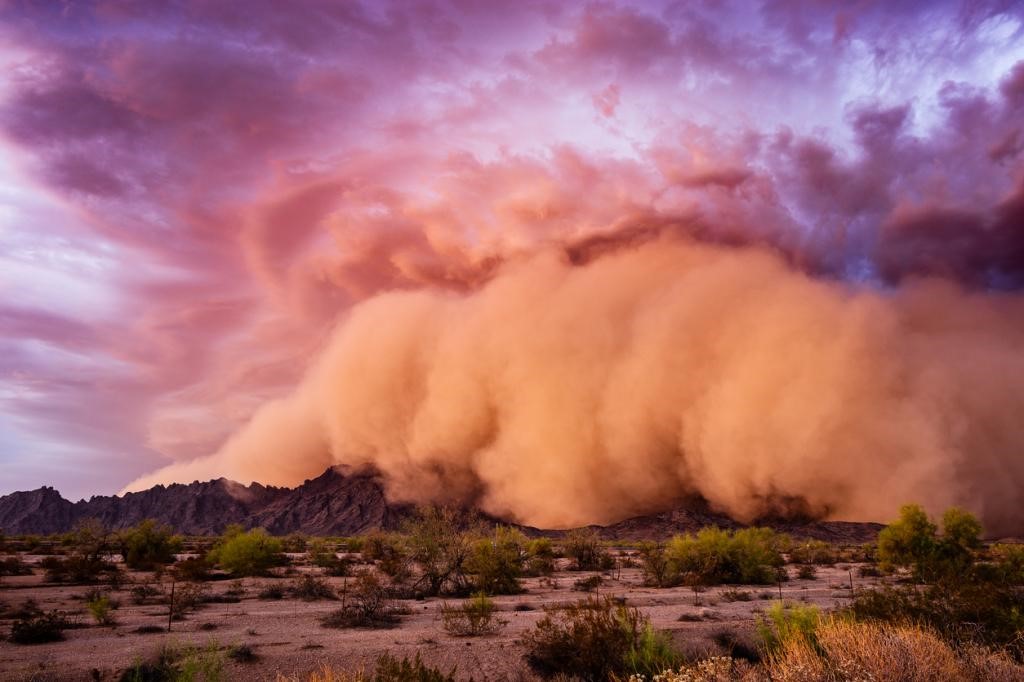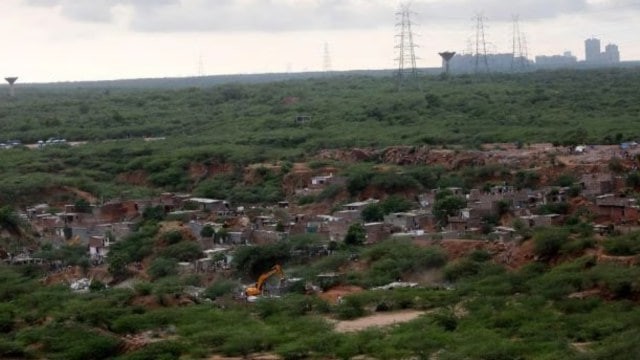Description

Disclaimer: Copyright infringement not intended.
Context
- Human activities contribute 25 percent of global dust emissions, with agriculture being the main anthropogenic source, according to the United Nations Convention to Combat Desertification (UNCCD).
- UNCCD, which is one of three Conventions that originated at the 1992 Earth Summit in Rio de Janeiro, released policy recommendations during a five-day meeting from November 13-17 in Uzbekistan.
Details
- Sand and dust storms are a meteorological phenomenon characterized by strong and turbulent winds lifting an ensemble of small particles to great heights.
- They are known to have adverse impacts on human health, the environment, and economies.
- They are typically created by thunderstorms or strong pressure gradients associated with cyclones, both of which boost wind speed across a wide area.
- Wind erosion produces 40% of the aerosols in the troposphere (the lowest layer of the Earth's atmosphere).
Main Sources:
- The dry regions of Northern Africa, the Arabian Peninsula, Central Asia, and China are the primary suppliers of these mineral dusts.
- Australia, America, and South Africa all contribute tiny but significant amounts.
- The main sources of sand and dust storms are the world’s drylands.
- About 75 percent of emissions come from natural sources such as hyper-arid regions, topographic depressions in arid areas, and dry ancient lake beds with little vegetative cover.
- Anthropogenic factors such as land-use change, agriculture, water diversion and deforestation contribute to the remaining 25 percent.
- Abandoned cropland, for instance, are a source of sand and dust storms. Further, water consumption in agriculture shrinks water bodies, creating new sources of sand and dust storms.
- For example, the excessive diversion of water from rivers in Central Asia over several decades towards agriculture has shrunk the Aral Sea, a pre-existing lake between Kazakhstan to its north and Uzbekistan to its south.
- It has now become the Aralkum Desert, a significant new source of sand and dust storms.
- Climate Change: Climate change, too, plays a role. Extreme wind events, aridity and frequent, severe and longer droughts worsen the storms.
- Other factors such as high air temperature, minimal precipitation and strong winds also act as drivers, the FAO stated.

Negative Impact
- Sand and dust storms lower the yields and productivity of crops, trees, pastures, and livestock.
- However, many of these impacts have not yet been well-quantified, according to the FAO report.
- For instance, a sand and dust storm that lasted for two days in mid-March 2021 affected an estimated 8,000 people in 2,000 households across 14 of Mongolia’s 21 provinces.
- Further, 10 people lost their lives and 1.6 million livestock were reported missing.
Impact on Power Plants
- They can interfere with energy infrastructure, adversely affecting electricity transmission lines and causing power outages.
- India, China and Pakistan witnessed 1,584 gigawatt-hours (GWh), 679 GWh and 555 Gwh of energy loss, respectively.
- These losses amounted to over Rs. 782 crores for India per year.
Affect Freshwater Sources
- Extreme dust deposition also occurs in the Himalaya-Hindu Kush Mountain range and the Tibetan Plateau, the so-called 'third pole' that provides fresh water to more than 1.3 billion people in Asia.
Increases Ice Melting
- The deposition of dust on glaciers causes a warming effect, accelerating ice melting, with several direct and indirect consequences for society, including food security, energy production, agriculture, water stress, and flood regimes.
On farming
- Dust deposition has had a significant influence on farming in Turkmenistan, Pakistan, and Uzbekistan.
- Much of this dust has a high salt concentration, making it harmful to plants.
- It decreases yield, posing a severe danger to irrigated cotton and other crop productivity.
On Sustainable Development Goals (SDG)
- They have a direct impact on 11 of the 17 UN-mandated Sustainable Development Goals (SDGs).
- Ending all forms of poverty, hunger, good health and well-being, affordable and clean energy, decent job and economic growth, climate action, and so on.
Positive Impact
- They can boost nutrient content in deposition sites, benefiting vegetation.
- Dust deposited on bodies of water can change their chemical properties, resulting in both beneficial and negative results.
- Iron-carrying dust particles can nourish sections of the water, increasing phytoplankton equilibrium and influencing marine food webs.

Way Forward
- Because their effects are complicated, they represent a key emergent issue for Asia-Pacific policymakers.
- Member States must strategize their joint actions, including gaining a better understanding of the socioeconomic impact of sand and dust storms, establishing a coordinated monitoring and early warning system with an impact-based focus, and coordinating actions to mitigate risks in the most vulnerable and exposed geographical areas.
|
PRACTICE QUESTION
Sand and dust storms have become increasingly prevalent across various regions, posing environmental, health, and socio-economic challenges. Examine the factors contributing to the occurrence of sand and dust storms, and discuss their impacts on ecosystems, agriculture, and human health.
|












